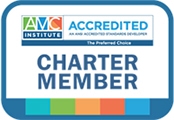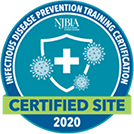Engaging your members is always a topic of discussion. For many organizations, it’s the decision between using a volunteer leader committee, task force model, or providing micro-volunteering opportunities as part of the volunteer buffet. When to use each, and which is best for your organization, are just a few of the questions that need to be answered when deciding which strategy will achieve maximum results.

Committees, the most formal of work groups, are groups of volunteers appointed or selected to perform a function on behalf of the association. In a sense, the association entrusts a smaller subset of members to do something for them. Often defined in organizational by-laws or statutes, committees serve very specific functions within organizations. Typically, they are headed by a committee chair and comprise individuals representing different points of view. Most committees are enduring, as they have no fixed endpoint.

Task forces are small groups of people brought together to accomplish a specific objective, with the expectation that the group will disband when the objective has been completed. Whereas committees are typically defined in organizational by-laws or other formal documents, task forces are created on an as-needed basis. Often, the creation of a task force occurs after the result of some event, causing the need for an organization to acquire knowledge as to how to best respond.

What we have all read lately, and are probably experiencing, is that long-term volunteer commitments are lessening and working in short-term task forces, or taking on “micro-volunteering” is becoming the new normal. Micro-volunteering is emerging as a smart way to expand your volunteer pool and build engagement among your less connected members. Micro-volunteering is defined as “easy, quick, low-commitment actions that benefit a worthy cause.” Your association serves a worthy cause, and by providing micro-volunteer opportunities, you can engage members who find specific project work more appealing than sitting on a broader committee, or who want to contribute without making a multi-year commitment.
It can be difficult to begin incorporating micro-volunteer opportunities after years of only using the traditional board and committee structure. You will have specific ideas for your particular association, but some general ideas include:
- Writing or editing webpages
- Helping with on-site event registration
- Providing feedback on an event theme or graphic
- Completing a survey or participating in a focus group
- Spreading the word about a survey to new networks
- Researching other associations in your field to compile trends or benchmarks
- Helping to greet new members at an event
Promoting volunteer opportunities
Once you brainstorm the volunteer opportunities, you need to make them known to your members. Create a page on your association’s website that lists the volunteer opportunities with short descriptions and timelines, then publicize this through email, social media, or word of mouth – whatever method works best for your members.
An example of how to promote different volunteer opportunities below:
The choice is yours. Volunteer commitments vary depending on the opportunity and you. We currently have three categories of volunteer opportunities:
- Committee Volunteer Opportunities (2-3 yrs. commitment)
Term-based volunteer opportunities related to XYZ association committees. Committee members serve 2-3 year terms. - Task Volunteer Opportunities (1 yr. or less commitment)
Task-based volunteer opportunities are usually project specific and typically have a short term commitment of 6 months to a year. - Micro-Volunteer Opportunities (6 months or less commitment)
Micro-volunteer opportunities are easy, quick, and low-commitment tasks or projects that allow members to contribute feedback or expertise and talent in small increments. These opportunities usually have a short term commitment of 30 minutes - 6 months.
When promoting the different volunteering opportunities, communicate it in a way that people can understand clearly and concisely. For example, for micro-volunteer opportunities, make it known that 30 minutes, or whatever short duration of their time, will help make a new member feel welcomed at an event, or provide invaluable feedback on a new website initiative you are starting.
Most associations know that there will always be a place for boards and committees; the smart associations will also add task force and micro-volunteer opportunities to tap into the broadest possible volunteer base.
What does your organization do? We’d love to know. Email kkaragosian@ahredchair.com or comment below. We only need 3 minutes of your time...




